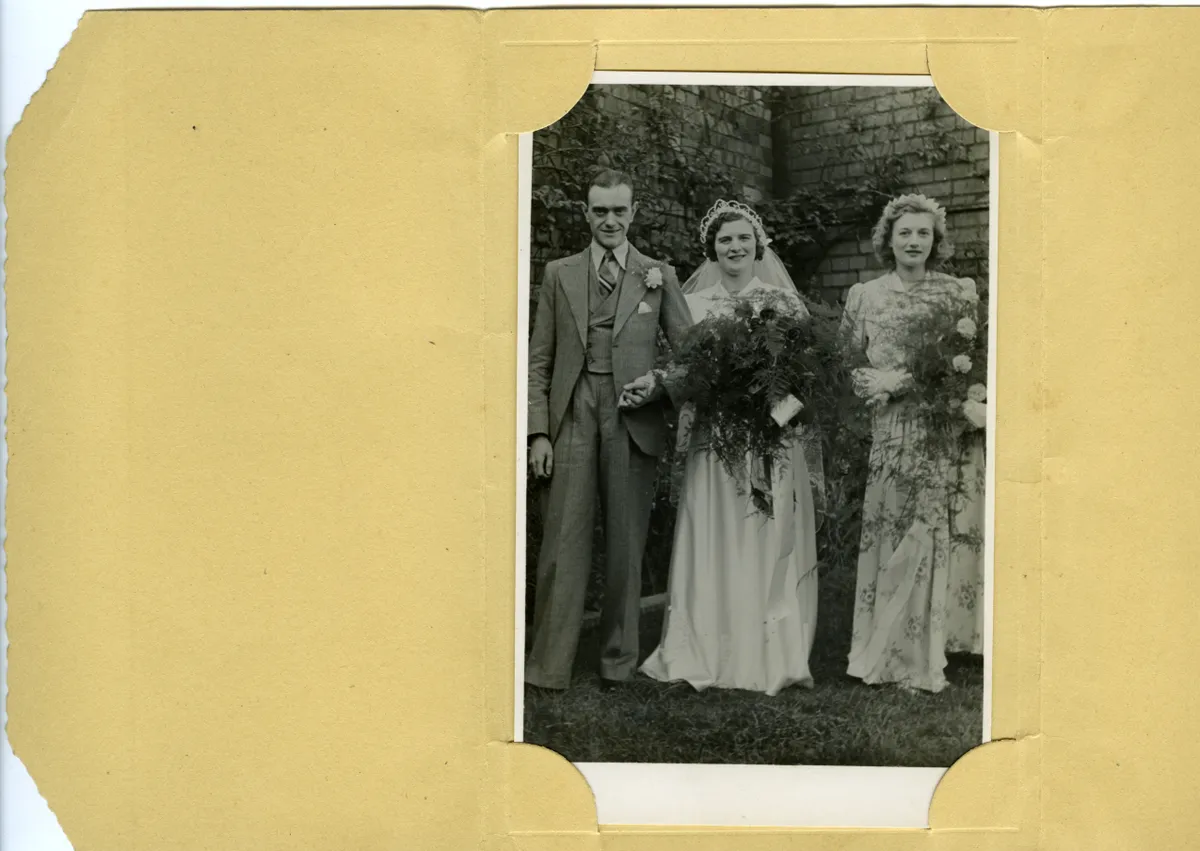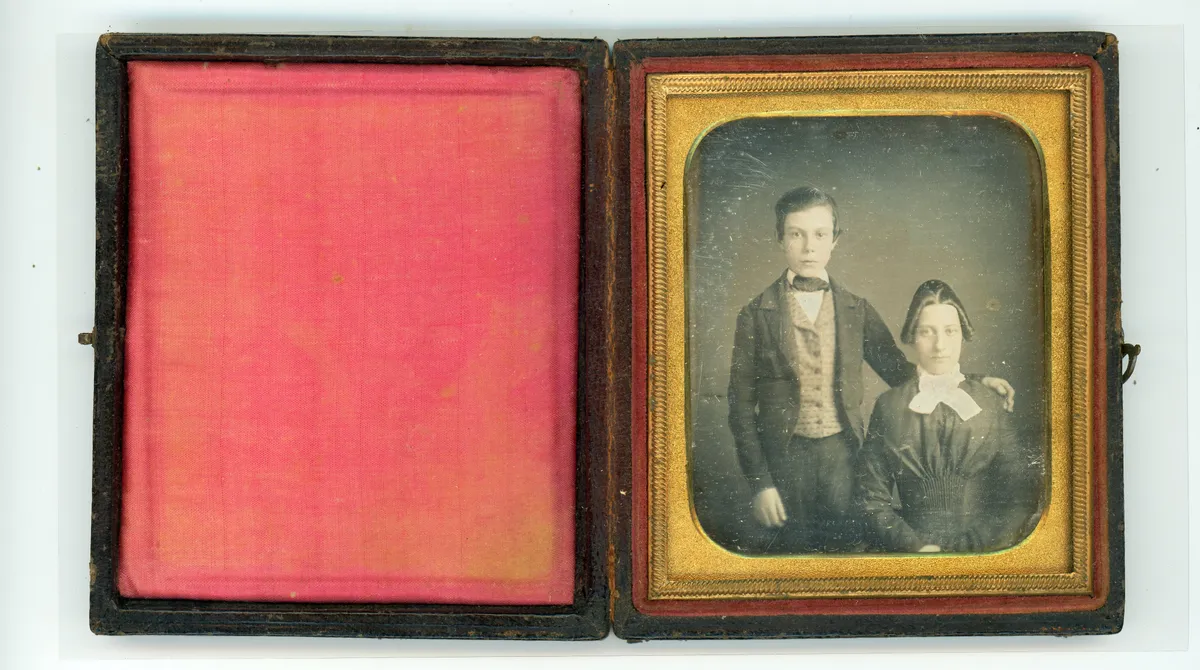As custodians of precious old family photographs dating back generations, we owe it to both our ancestors and our descendants to protect them for the future. Old photographs are important records of our family and social history – there’s nothing like seeing your ancestor’s face, preserved through the years with the snap of the camera.
How to clean old photographs
The first step is to ensure that your old photographs are in the best possible condition - free of dust and, most importantly, damp spores and any damaging items such as paper clips, pins, staples, string and rubber bands. You may also want to employ an old photograph restorer/conservator for advice on whether repairs are needed.
Before you start working with your old photographs, prepare a clean surface away from any liquids. Handle photographs delicately – never lift larger photographs on paper or glass by the corner, and proceed with care when opening curled photographs/negatives that may need professional help to flatten. Materials get brittle with age, and can easily snap. A piece of acid-free mount board is ideal as a support.
It is good practice to get used to wearing gloves when handling old photographs to avoid the transfer of oils etc from your hands. Nitrile gloves are ideal, but if you prefer cotton ensure that they are clean. Dust, dirt and damp spores have a huge effect on the life of photographs. So using a soft brush, ideally made of squirrel hair or a synthetic equivalent, work gently over the face of the old photograph to remove dust and damp spores. A small dust-blower may be useful for the reverse, but aerosol air dusters are too powerful for the surface of an old photo.
Also, never use pressure-sensitive tape such as Sellotape for repairs. This dries out, turns yellow and stains. Any repairs should be made on the reverse using acid-free tape, but for more complex jobs consult a restorer/conservator.
Faded photographs and those with a mirrored appearance known as ‘silvered out’ will continue to deteriorate, but can usually be rescued by having a new negative and traditional print produced. These should be your priority to ensure you do not lose any of your images.
When putting together an old photograph archive, it’s important that you only include traditional darkroom-printed photographs rather than digital prints. Darkroom prints are still produced as our ancestors did, and last about a century or more. In contrast, even professionally produced digital prints often have a lifespan of no more than 10–15 years, while inkjet prints only offer a couple of years at best.
How to store old photographs
If possible, keep your old photographs in the original album. Consult a conservator to repair any damage to the spine or pages.
If you’re choosing your own photograph album, make sure it is high-quality, with acid-free pages and glassine interleaves. A ring-binder with polyester sleeves that allow for later additions or changing the order if necessary is the ideal choice. Old photographs can be inserted directly into the sleeves, or mounted on acid-free card inserts. You will only carry out this exercise once, so it is worth investing in good-quality items to create an archive for the future.

In addition, acid-free boxes are available for all sizes of photographs, newspapers, heirlooms etc, and can be used in conjunction with suitably sized acid-free polyester sleeves or acid-free tissue.
Make sure to label your old photographs so that future generations know who’s in them. Add as much information as you know, even the memory of the knitted swimsuit – humour adds another dimension and brings the family story to life. Always use a soft pencil (eg 2B) to gently write notes on the reverse of an old photograph, or preferably add details on the acid-free card inserts in the sleeves. Ink pens are not recommended because they may smudge and transfer, and never attach sticky notes to the face of your photos because they will leave a residue.
Label your photographs with as much information as you know – humour adds another dimension and brings the family story to life.
Avoid storing your old photographs in attics and outhouses because of the varying temperatures and likelihood of bugs - woodworm like eating the mount surrounds and silverfish enjoy the gelatin content prevalent in prints after the 1870s. A spare room is ideal, because these are usually kept moderately warm and rarely heated to high temperatures. If it’s too dry, your old photographs will dry out; if it’s too humid, the damp spores will return.
How to display old photographs
Displaying your old photographs in frames rather than storing them in an archive should be safe, as long as you select the correct materials.
Use an acid-free window mount with a protective acid-free backing board to ensure that your old photograph is not sitting next to the wooden backing board of the picture frame. The photograph should be hinged to the acid-free backing board using acid-free tape in a ‘T’ format.
As for the glass, Tru Vue conservation glass, or similar, will protect the old photograph from 99 per cent of damage from ultraviolet light and has a non-reflective quality far superior to standard non-reflective glass.
For the frame, choosing one sympathetic to the era of the photograph will enhance its appearance. Ensure that the back is sealed with acid-free tape to keep out dust and insects. Finally, display the old photograph out of direct sunlight (a north-facing wall is ideal), and away from sources of heat such as radiators.
If you're feeling ambitious, you can even display your old photographs in a galley wall - this guide from Your Home Style will show you how.

For more old photography tips, check out Homes & Antiques' guides to buying and collecting antique photographs and vintage cameras
The best companies for buying old photograph preservation equipment
Black and White Revival
Helen’s company carries out the restoration and conservation of photographs, and advises on and supplies archival storage.
Conservation by Design
Based in Milton Keynes, Conservation by Design was founded in 1992.
Harrison Cameras
This firm sells photographic equipment including the Walther range of acid-free albums.
Henzo Albums
Henzo’s Memory and Promo photographic albums are also free from acid.
Preservation Equipment
This company supplies material for preserving and displaying documents and photos. Its blog has useful advice on good practice and storage.
Secol
Secol supplies archival products to galleries, museums and photographic libraries.